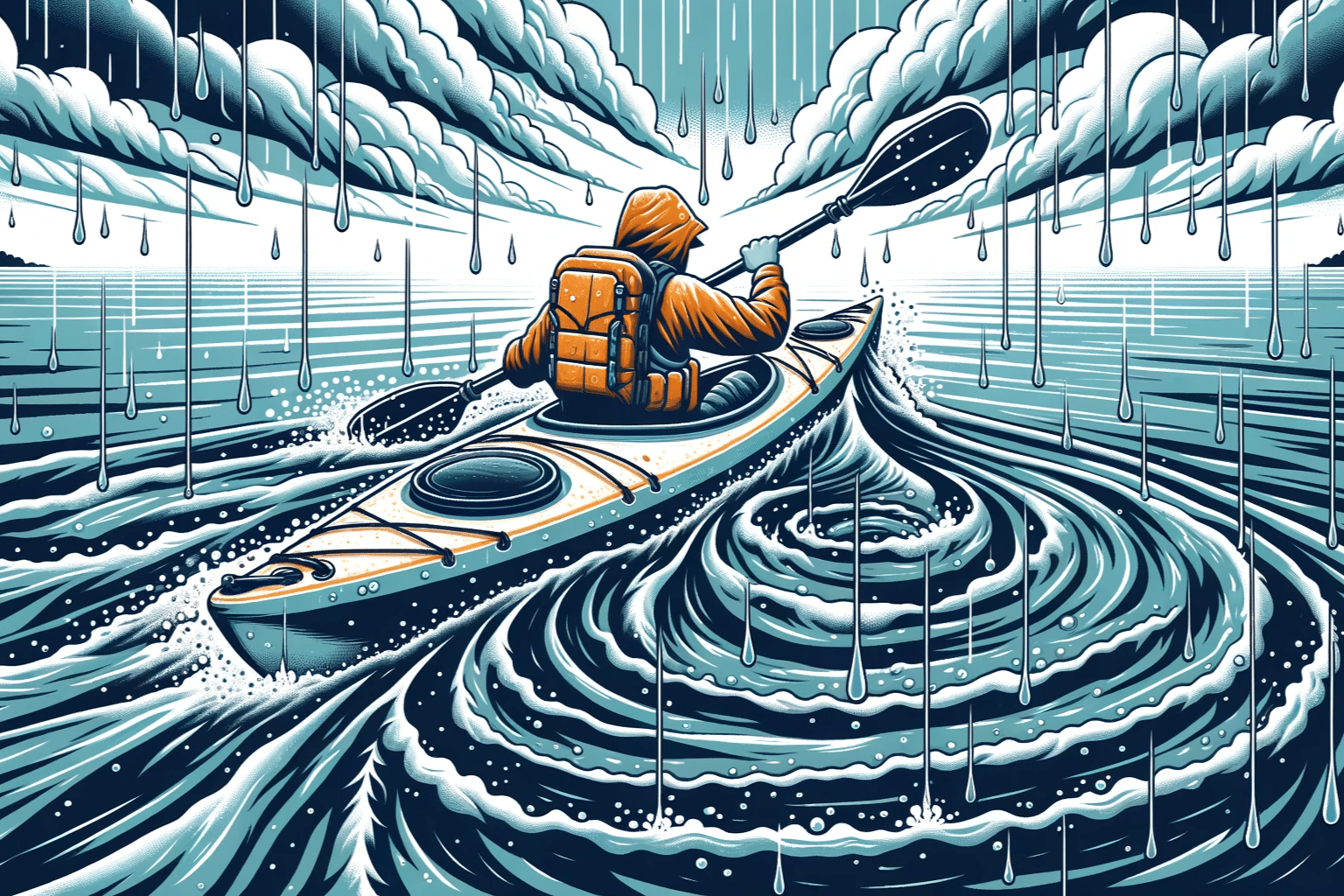Have you ever wondered what it’s like to kayak through a winter wonderland, where the water sparkles with reflections of snowy banks? Winter kayaking offers a unique paddling experience that combines the tranquility of a snow-covered landscape with the thrill of icy waters. This ultimate guide is your gateway to embracing the chill and becoming a cold-weather paddler.
Equipped with the right gear, safety knowledge, and techniques, winter kayaking can be an exhilarating adventure. From understanding the importance of proper clothing and equipment to mastering the skills needed for icy conditions, this guide provides an overview of what you need for a successful winter voyage on the water.

Winter Kayaking – Key Takeaways
☑️ Is winter kayaking worth the extra preparation? Absolutely! Paddling through tranquil waters surrounded by snow offers a unique, serene experience worth the effort.
☑️ What are the risks of winter kayaking? Be aware of risks such as hypothermia from cold exposure, ice that can damage your kayak, slippery conditions, limited visibility from fog or snow, and the potential for slower emergency response.
☑️ How do you gear up for cold-weather paddling? Invest in insulated waterproof clothing, a well-fitted life vest, and ensure your kayak is winter-ready, particularly favoring sit-inside models.
☑️ What’s crucial for winter kayaking safety? Beyond gear, mastery of rescue techniques, paddling in groups, and proper planning including emergency protocols are non-negotiable for safety.
Why Kayak in Winter?
Untouched Beauty
The winter months bring a transformative magic to the great outdoors that’s unlike any other season. Imagine paddling through tranquil waters as snowflakes dance around you. The winter shoreline, adorned with glistening icicles and a blanket of snow, offers a vista so pristine, that it feels like you’ve entered a different world. Your winter trip will likely be punctuated by moments of sheer awe at the untouched beauty surrounding you.
Less Crowded Waters
Let’s face it—most people are deterred by the thought of outdoor activities on a cold winter day, let alone kayaking. And that’s exactly why you should consider it. The absence of the usual crowds offers a unique kind of solitude and peace. You’ll have the lake or river almost entirely to yourself, giving you the chance to truly connect with nature.
Unique Challenges
Winter kayaking isn’t without its hurdles, but that’s what adds to the allure. The cold weather presents challenges like ice formations that you’ll need to navigate around, and the potential for slippery conditions. But overcoming these challenges adds an extra layer of satisfaction to your winter kayaking adventure.
So, why go kayaking in winter? Well, between the awe-inspiring beauty, solitude on the water, and unique challenges you’ll face, a winter kayaking adventure offers experiences and memories that last a lifetime.
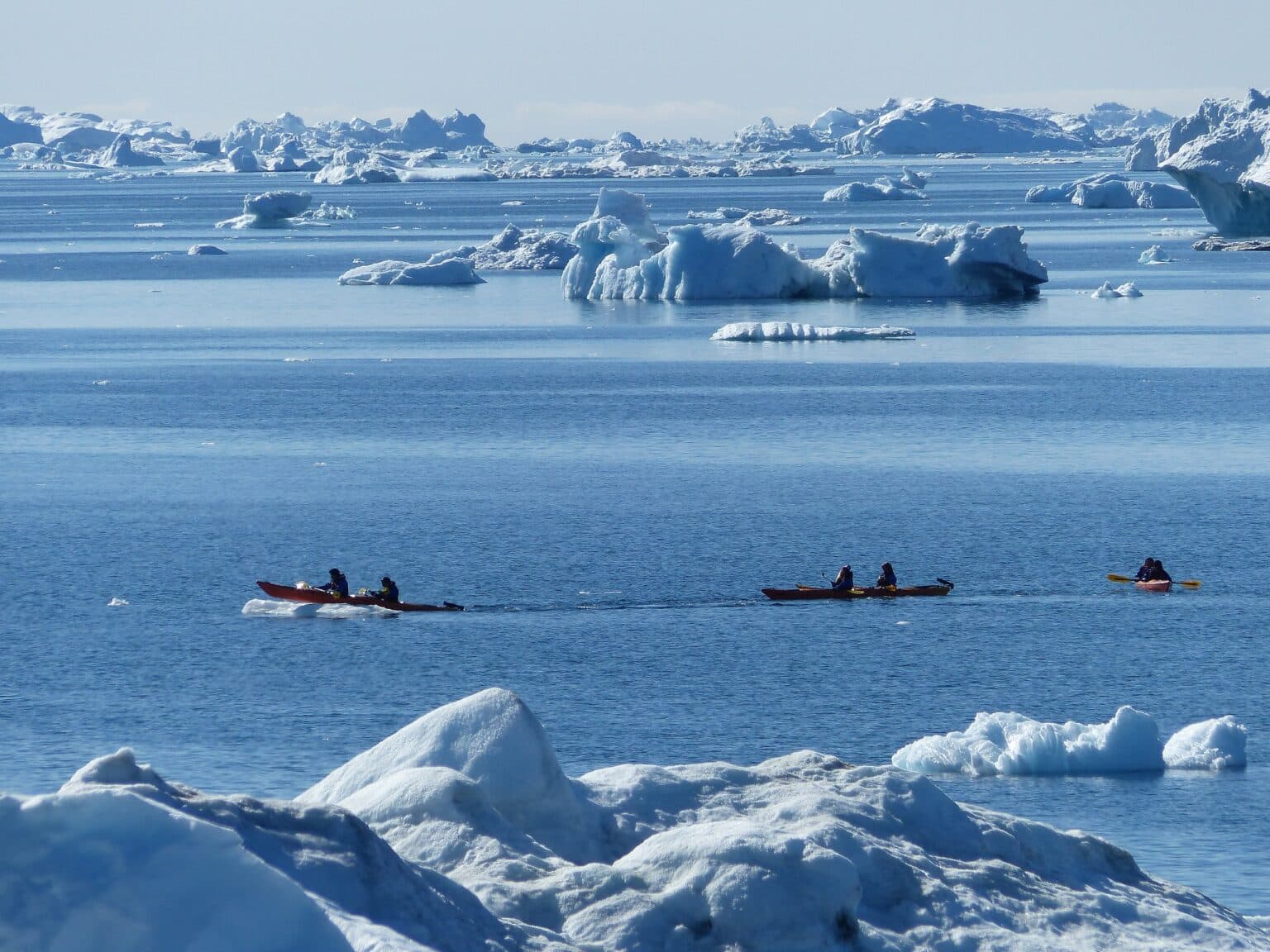
Is Winter Kayaking Safe?
Assessing Risks
First and foremost, let’s tackle the question that’s probably on your mind: is winter kayaking safe? The answer is not as straightforward as a simple yes or no. Cold weather kayaking comes with its own set of risks that are different from kayaking in other seasons. Here are some of the primary dangers of winter kayaking:
- Hypothermia: Extended exposure to cold water and air can significantly lower your body temperature.
- Ice Collisions: Floating ice chunks or ice-covered shorelines can be hazardous.
- Slippery Surfaces: Both your kayak and the launch areas can become slippery, increasing the risk of accidents.
- Reduced Dexterity: Cold temperatures can affect your ability to use your hands, which can be particularly problematic in an emergency.
- Limited Visibility: Fog, snow, and early darkness can hinder visibility.
- Difficult Rescue: Many rescue services are less available or slower to reach you during the winter months.
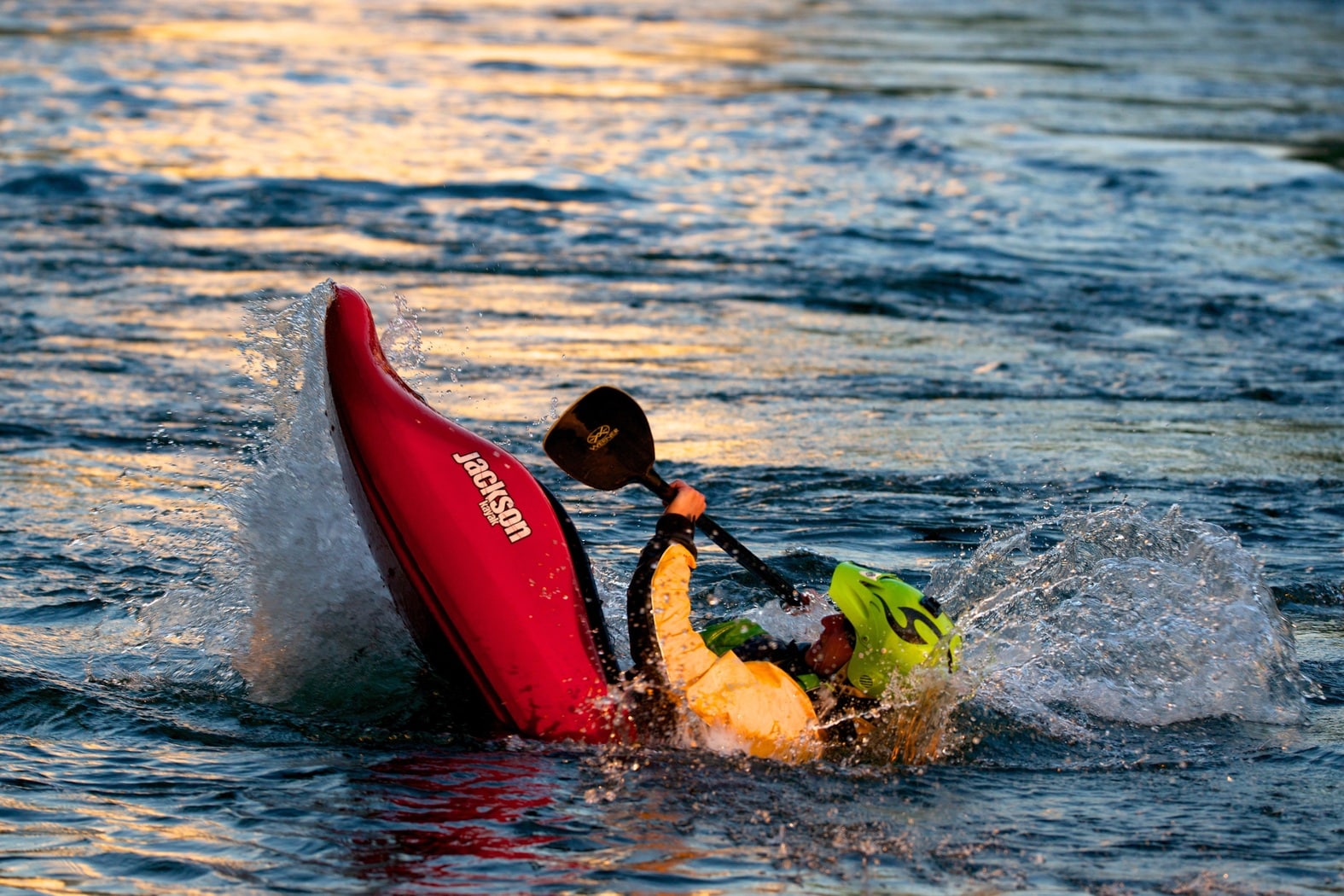
10 Most Important Safety Measures
Recognizing the risks is only the first step. Let’s move on to the proactive measures you can take to mitigate these risks and enjoy a safe winter kayaking trip.
1. Gear Up Properly
Invest in specialized cold weather and cold water gear. Insulated, waterproof clothing is crucial, as is a well-fitted life vest.
2. Master the Kayak Rescue
Before embarking on your winter adventure, make sure you are well-versed in kayak rescue techniques. Practice with a buddy in a controlled environment until you’re both confident in your skills.
3. Expert Training and Workshops
While self-preparation is good, taking a winter kayaking safety course can provide expert guidance. These courses often cover topics such as cold shock, hypothermia treatment, and advanced kayak rescue techniques that are specifically tailored for winter conditions.
4. Paddling in Pairs or Groups
Whenever possible, avoid kayaking alone in cold weather. The buddy system is an effective safety measure, offering immediate help in case of an emergency, such as a wet exit or capsizing.
5. Plan and Communicate
Always let someone know your kayaking plans, including your expected return time and route. Carrying a waterproof phone or radio is also a smart move for emergency communication.
6. Check Weather Conditions
Before setting out, consult accurate weather reports and be prepared to postpone your trip if conditions are unfavorable. Wind speeds, water temperature, and precipitation can all affect your outing.
7. Visibility Tools
Low light conditions are common in winter. Equip your kayak with visibility tools like reflective tape, LED lights, or even a brightly colored flag to help other watercraft see you in dim conditions.
8. Monitoring Body Temperature
Frequent checks on your body temperature can help you gauge whether you’re dressed appropriately or need to make adjustments to prevent hypothermia. Consider carrying a small, easy-to-use thermometer as part of your gear.
9. Carry Emergency Supplies
Include a first aid kit, flare gun, whistle, and emergency food and water in your kayak. Also, consider carrying a heat source like chemical hand warmers or a small, waterproof firestarter kit.
10. Emergency Signaling Devices
Invest in specialized emergency signaling devices like Personal Locator Beacons (PLBs) or Emergency Position Indicating Radio Beacons (EPIRBs). These can send a distress signal and provide your exact location to rescue services.
By adhering to these safety measures, you can go a long way in reducing the inherent risks that come with winter kayaking. With proper preparation and precautions, winter kayaking can be a safe and rewarding experience.
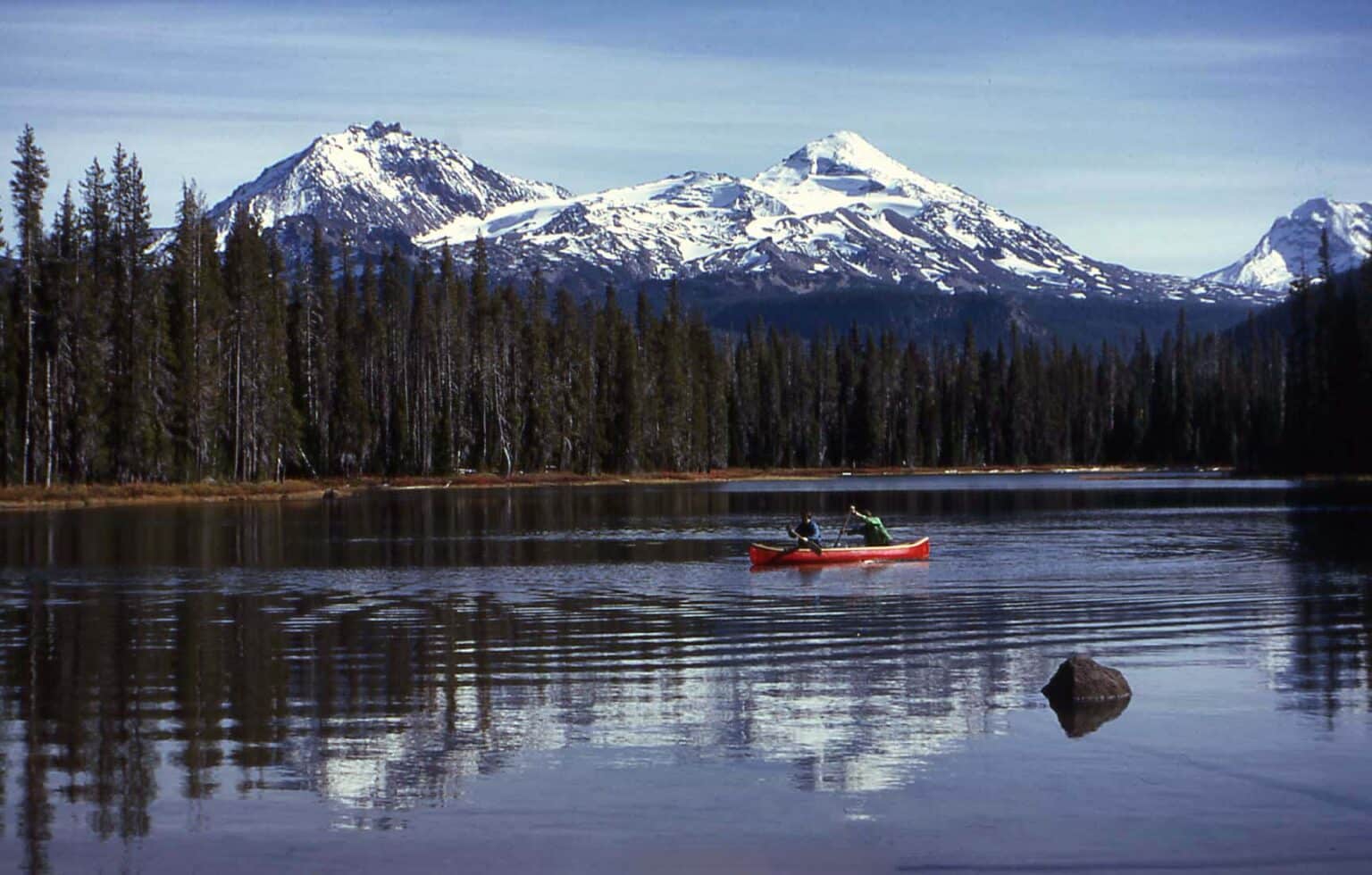
Weather Considerations
Weather Forecasts
When you’re planning a winter kayaking trip, staying updated on weather forecasts is critical. These forecasts not only help you choose the ideal day for your outing but also prepare for the conditions you’ll face. Utilize reliable weather reports to check for wind speeds, rain, snow, and other weather patterns. Always remember that sudden shifts in weather are more common in winter, making it crucial to be prepared for anything.
Air and Water Temperatures
The importance of air temperatures is pretty evident. Cold air can be bracing and invigorating but can also lead to frostbite or hypothermia if you’re not properly dressed. Water temperature, on the other hand, often goes unnoticed but is equally crucial. A sudden capsize into cold water could be extremely dangerous. Knowing the water temperature can help you prepare adequately, allowing you to choose the right type of wetsuit or dry suit.
In the same vein, air temperatures can guide your decisions on layering your clothing. You’ll need to adjust your clothing based on whether it’s a sunny winter day or a biting cold one with a wind chill.
Keeping an eye on weather reports, being aware of both air and water temperatures, and understanding how these factors will affect your kayaking experience are key steps in ensuring a safe and enjoyable winter kayaking adventure.
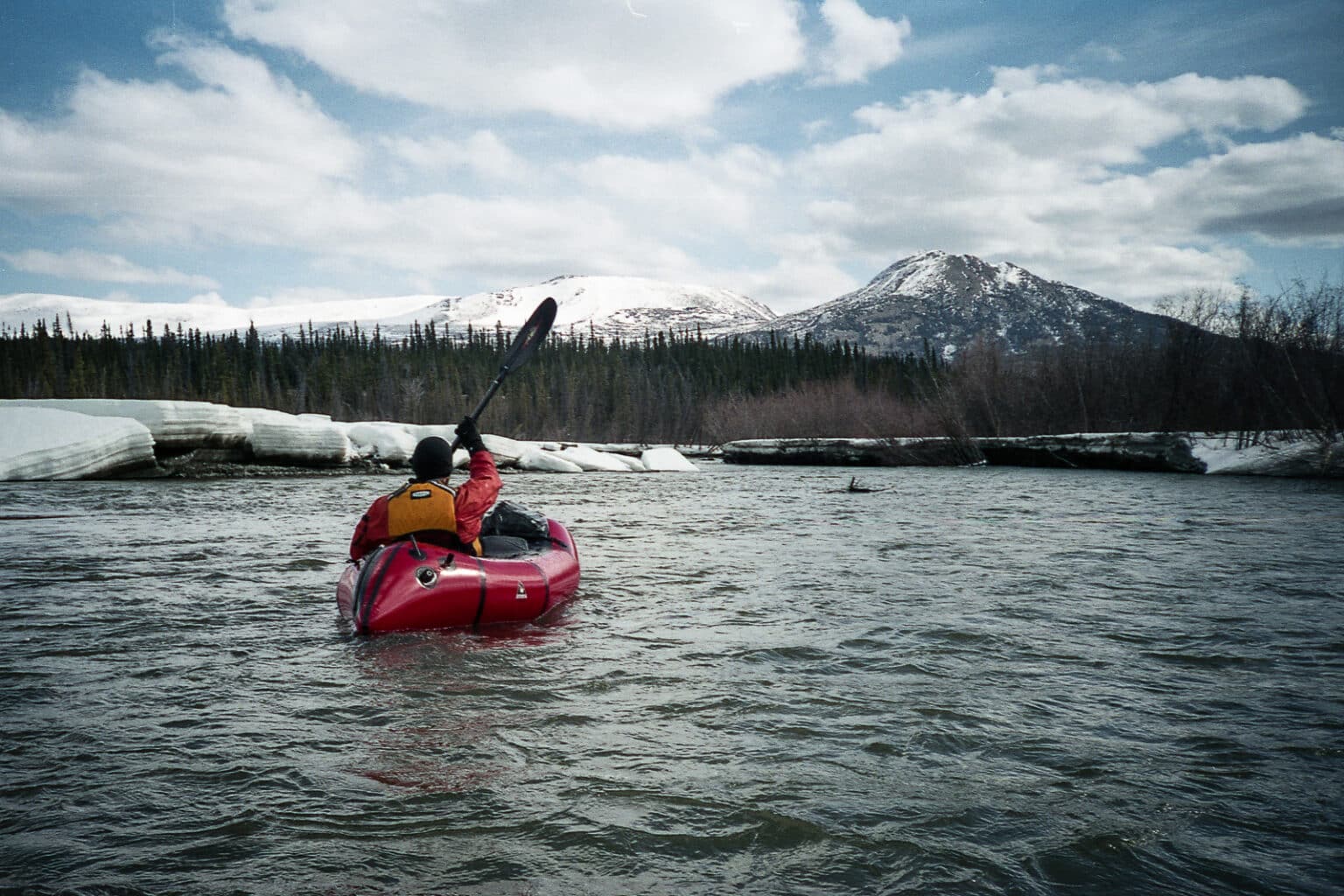
“Dylan in a packraft“, by Anthony DeLorenzo, licensed under CC BY 2.0
Gear Essentials for Winter Kayaking
Types of Kayaks for Winter
When it comes to winter kayaking, the type of kayak you choose can significantly impact your experience. Sit-inside kayaks are the most recommended for winter kayaking. They offer better protection against cold water and wind, unlike their sit-on-top counterparts. Within the sit-inside category, look for kayaks with a smaller cockpit; it’s easier to keep warm and is also better suited for attaching a spray skirt.
Ideal Kayak Types for Winter:
- Sit-Inside Kayaks: These kayaks are perfect for winter paddling, offering increased protection from the elements thanks to their enclosed cockpit.
- Touring Kayaks: Specifically designed for longer distances, touring kayaks often come with added storage space and enhanced stability, making them suitable for winter expeditions.
- Sea Kayaks: Ideal for ocean or open-water kayaking, these kayaks are generally more robust and handle rough conditions well, including icy waters. Here’s a comparison with River Kayaks.
Safety Gear
No winter kayaking gear list is complete without essential safety items. At the forefront of these are life jackets/life vests. They not only provide buoyancy but also offer an additional layer of insulation against the cold.
Another crucial item is the spray skirt. Especially the bungee skirt type, can keep water out of the cockpit, thus keeping you dry and warm. Moreover, knowing basic kayak rescue techniques will add an extra layer of security during your winter kayaking trip.
Must-Have Safety Gear:
- Personal Flotation Device (PFD): An absolute necessity for any water activity, the PFD not only ensures buoyancy but also serves as an additional insulation layer to keep you warm.
- Spray Skirt (preferably bungee skirt): An essential item for sit-inside kayaks, a spray skirt helps keep cold water out of the cockpit, providing additional thermal protection.
- Signal Flares and Whistle: Useful for emergency signaling, these tools are vital for attracting attention and aid in case of distress.
- Paddle Float: Used to stabilize the kayak in self-rescue scenarios, a paddle float can be crucial when you find yourself in the water.
- Emergency Paddle: Serves as a backup in case your primary paddle is lost or broken, ensuring you can still maneuver your kayak.
- First Aid Kit: Equipped with essential medical supplies, a first aid kit can address minor injuries and stabilize more serious conditions until help arrives.
- Bilge Pump: This is crucial for removing water that may have entered the kayak, especially important in winter conditions where you want to minimize exposure to cold water.
- Tow Line: In the event of another kayaker being in distress, a tow line can be essential for safely bringing them to shore.
- Float Bags: These add buoyancy to your kayak, making it easier to perform a self-rescue in case you capsize. They are a must-have for winter kayaking where getting back into the kayak quickly is more critical.
Additional Equipment
While the focus should be on kayaks and safety gear, a few additional pieces of equipment can enhance your winter kayaking experience.
- Waterproof Phone Case: Protects your phone from water damage and allows for secure storage during your trip.
- GPS and Waterproof Map: Ensures that you always know where you are, and a waterproof map serves as a backup to electronic devices.
- Dry Bags for Storage: Ideal for keeping personal items like extra clothing, food, and electronic devices dry.
- Paddle Gloves or Pogies: These specialized gloves keep your hands warm while offering a secure grip on the paddle.
- Compass: Serves as a reliable backup navigation tool when electronic devices fail or run out of battery.
- Thermos with Hot Beverage: A hot drink can offer much-needed warmth and a morale boost during cold winter paddling.
- Multi-tool: A versatile tool for quick repairs and adjustments, essential for resolving minor issues on the water.
- Headlamp: Enhances visibility during the shorter daylight hours of winter, this waterproof headlamp is especially useful during dusk or dawn trips.
- Anchor: Particularly valuable in sea kayaking or in moving waters, a small anchor helps you maintain your position.
- High-Energy Snacks: Nutrient-rich, high-calorie foods like trail mix can help sustain energy levels during long winter kayaking trips.
Remember, winter kayaking gear should be about both safety and comfort. Make sure you’re well-equipped to handle any challenges that may come your way while you’re out enjoying the unique beauty and solitude that winter kayaking offers.
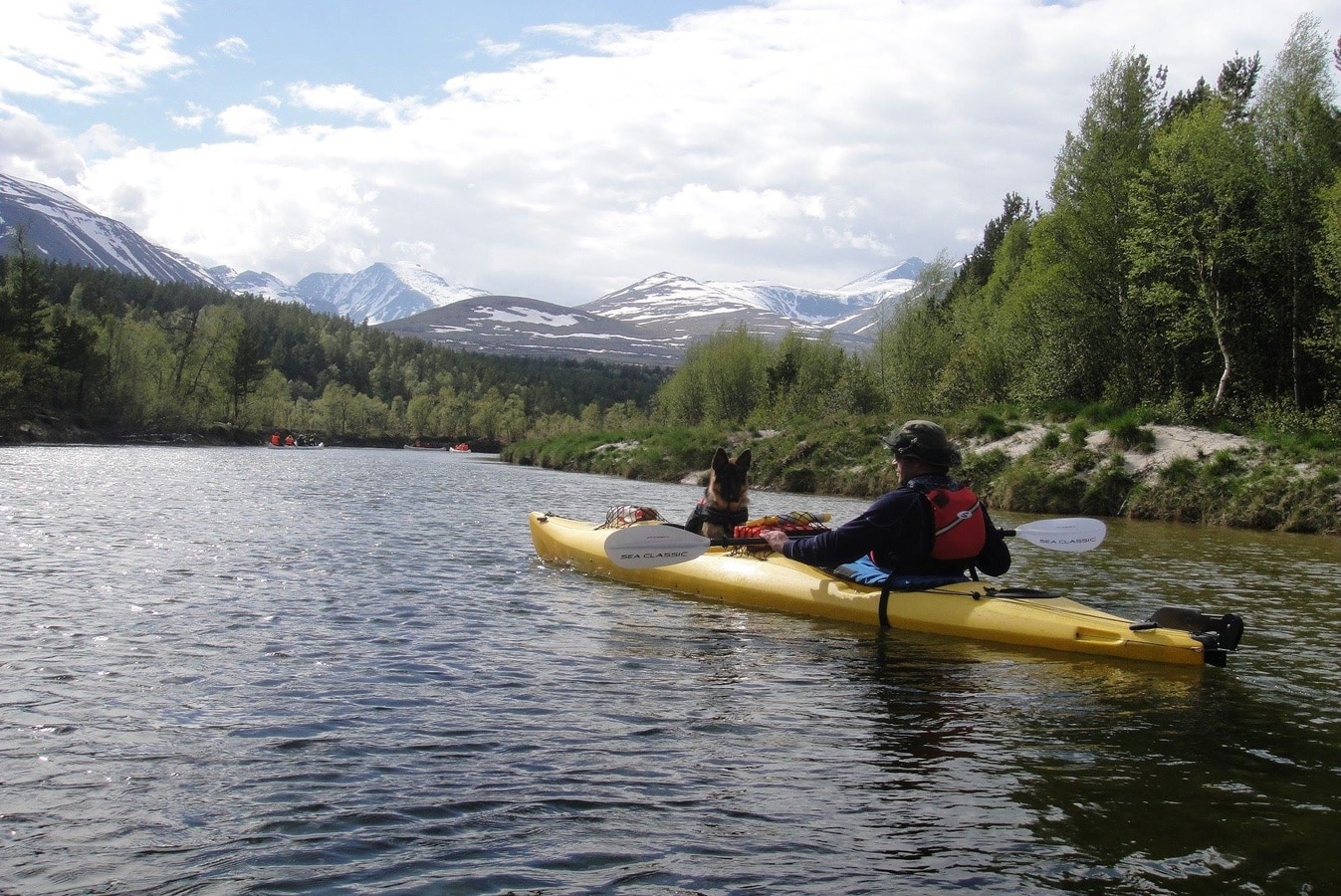
What to Wear for Winter Kayaking?
Layering Essentials
Layering is a necessity when you’re kayaking in winter. This technique gives you the flexibility to add or remove layers as conditions change.
Base Layer: Start with a moisture-wicking material. It’s essential to keep sweat off your skin in cold conditions as moisture can cool the body rapidly, increasing the risk of hypothermia. Materials like polyester, merino wool, or even specialized thermal fabrics work well for this purpose. Some kayakers even opt for compression garments in this layer to improve blood circulation.
Additional Layer: Once your base layer is sorted, the next step is insulation. Think fleece or synthetic down. This layer acts as your personal thermostat, capturing body heat in its fibers. You might also consider materials like PrimaLoft or Thinsulate for their excellent heat retention capabilities.
Outer Layer: This is your protective shell against the elements. It should be a waterproof, yet breathable material. Gore-Tex is a popular choice here, but there are other equally effective materials like eVent or H2No. Ensure it’s also wind-resistant to shield against any harsh winds you may encounter.
Material Considerations
The fabric you choose for your layers is crucial for ensuring comfort and safety. Avoid cotton like the plague—it absorbs and retains water, which is an express ticket to Hypothermia Town. Instead, make sure to opt for synthetic materials. These fabrics wick moisture away and dry quickly, making them ideal choices for your base and insulating layers.
Synthetic down or specialized outdoor fleece works excellently for insulation, offering both warmth and quick drying times. For your outer layer, look for materials that boast a high level of water resistance while still allowing for breathability. Gore-Tex, as mentioned before, is excellent, but you might also explore other proprietary fabrics like eVent or H2No, known for their durability and effectiveness in wet conditions.
Foot and Hand Protection
Cold hands and feet can quickly ruin a kayaking trip. For your hands, neoprene gloves are the go-to choice. They offer excellent insulation and allow for a better grip on your paddle. For your feet, it’s crucial to wear insulating, waterproof boots. Add a layer of thermal socks to keep your feet warm, but ensure it’s not too tight to restrict blood flow.
Proper attire isn’t just about avoiding discomfort; it’s a safety measure. The wrong clothing could lead to cold shock or hypothermia. By choosing the right layers and materials, and paying special attention to protecting your hands and feet, you’re setting yourself up for a successful winter kayaking adventure.
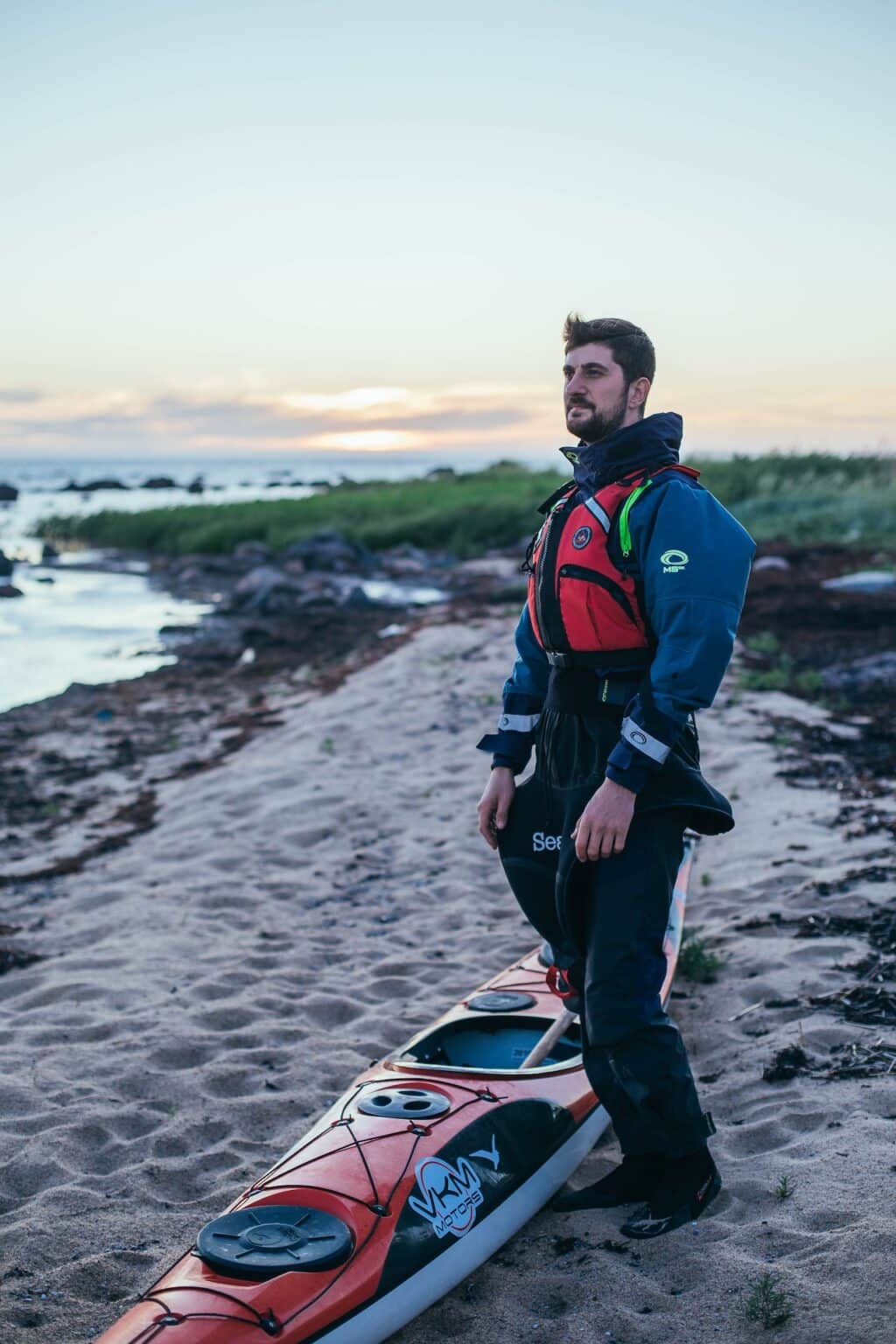
Staying Warm and Dry
Tips for Staying Warm and Dry
Keeping warm and dry is the cornerstone of an enjoyable winter kayaking trip. Here are some practical pointers:
- Extra Insulation: Always bring extra layers of clothing to add or remove as your body temperature fluctuates.
- Hot Water Flask: Carrying a flask of hot water can provide instant warmth.
- Use Hand Warmers: Hand warmers can be slipped inside your gloves for added heat, especially during those really chilly days.
- Foot Warmers: Similar to hand warmers, these can be inserted in your boots to keep your feet warm.
- Maintain Activity: Keep paddling at a steady pace to maintain body heat. It’s when you stop that you feel the cold the most.
Dealing with Wet Exits
Wet exits can be particularly challenging during winter kayaking. Here’s how to manage them:
- Extra Clothing: Always pack extra clothing in a waterproof bag. If you get wet, you’ll need to change immediately.
- Rapid Re-entry Techniques: Learn and practice quick re-entry into your kayak to minimize exposure to cold water.
- Emergency Blanket: A compact, thermal emergency blanket can help restore body heat after a wet exit.
By following these practical tips and techniques, you can focus on enjoying the breathtaking winter landscapes rather than shivering in your kayak.
Planning Your Cold Weather Trip
Location Choices
Deciding on the perfect location is the first step in planning a successful winter kayaking trip. From freshwater rivers to sea kayaking, the choices are endless. Do some research on the winter paddling opportunities in your desired area. Check for seasonal restrictions and the availability of emergency services nearby. Certain locations may offer more sheltered waters, making them ideal for winter kayaking.
Timing
While the serene beauty of winter landscapes is unmatched, daylight during these months can be scarce. Plan your winter kayaking trip around the limited daylight hours. Make sure to factor in the time it will take to set up and pack up your gear. Aim for mid-day excursions to maximize natural light. If you are interested in Kayaking at Night, we got you covered. Although we do not recommend practicing Night Kayaking in the winter.
Backup Plans
Even with impeccable planning, things can go awry. Whether it’s a sudden change in weather conditions or an equipment malfunction, having a backup plan is crucial. Ensure you have an alternate location that you can retreat to if the need arises. It’s also wise to set up check-in times with someone not on the trip. Provide them with a detailed itinerary and instruct them on steps to take in case they don’t hear from you.
Thorough planning ensures that your winter kayaking trip is not only enjoyable but also safe. From choosing the right location to having a Plan B, these guidelines should be your paddling roadmap for the cold season.
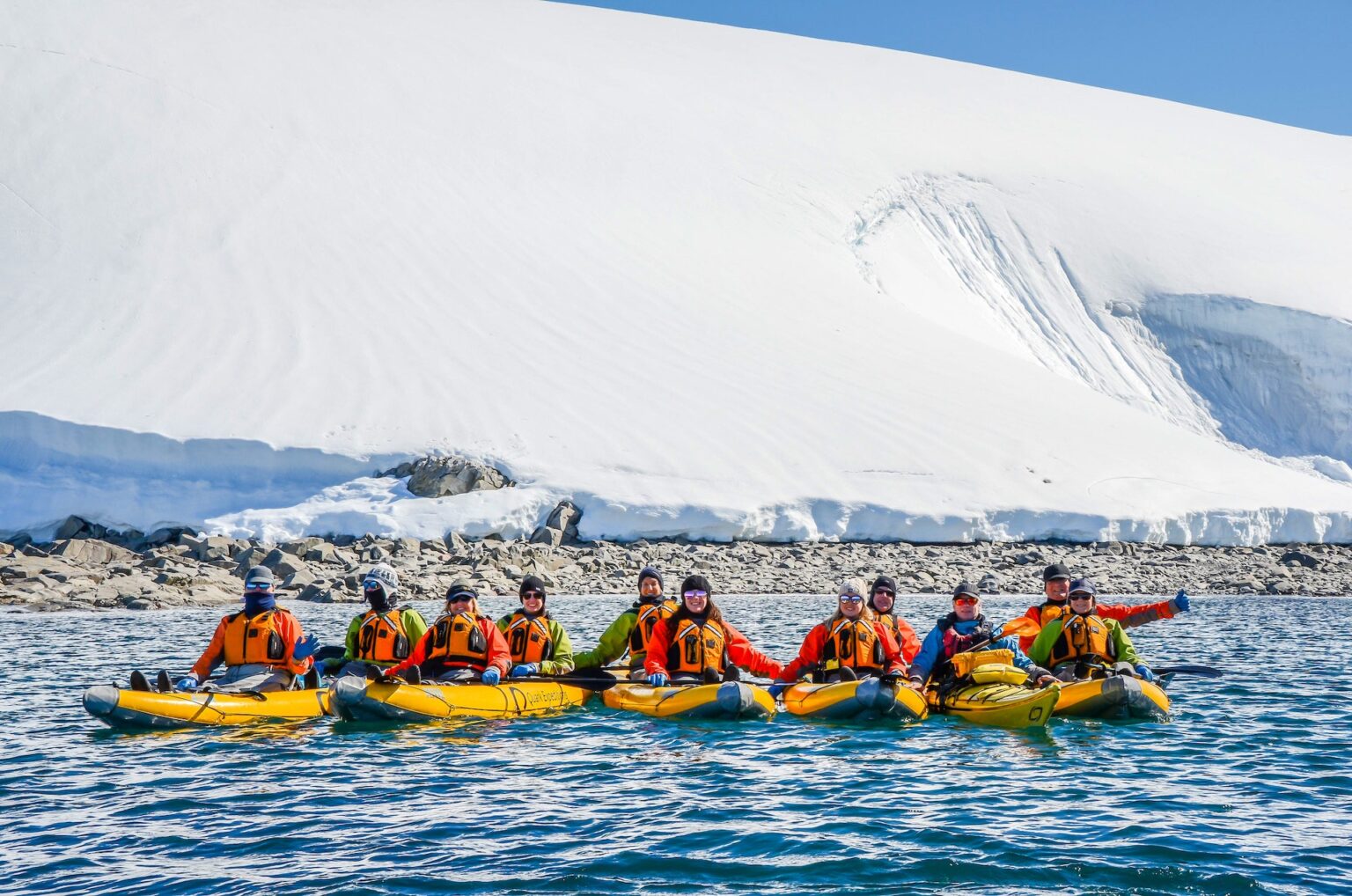
Training and Conditioning
Cold Water Immersion
Before plunging into winter paddling adventures, it’s vital to familiarize yourself with cold water immersion. The initial cold shock can be life-threatening if you’re not prepared. Training sessions in controlled environments can acclimatize your body to the cold and teach you how to maintain body heat. Try submerging yourself in cold water while closely monitored, to understand how your body reacts. This exposure will also help you refine your wet exit strategy.
Stamina Building
Cold-weather kayaking is not just a test of your paddling skills but also your physical stamina. Training should involve cardio exercises to build endurance, especially because kayaking in winter can burn more calories than usual. Activities like running, cycling, or even specialized kayak training machines can be useful. Mix in some strength training to improve your paddling power. Remember, the better your physical condition, the more enjoyable and safer your winter kayaking experience will be.
Incorporate these training and conditioning techniques into your routine, and you’ll be better prepared for the unique challenges that come with cold-weather kayaking.
Frequently Asked Questions (FAQ)
Is kayaking in the winter safe?
Winter kayaking can be safe if you take the necessary precautions. Understand the unique risks, like cold weather and cold shock, and equip yourself with the right gear. Proper training and preparation are crucial.
What do you wear for winter kayaking?
Wearing the right clothing is essential for staying warm and dry. Opt for synthetic materials for your base layer, add an additional layer of insulation, and finish with a waterproof outer layer. Foot and hand protection like neoprene gloves are also advisable.
When should you not kayak in winter?
Avoid kayaking in winter when the conditions are extremely harsh, like blizzards or strong wind storms. These conditions make it challenging to navigate and increase the risk of cold shock or hypothermia. If local authorities or weather forecasts advise against water activities, it’s best to heed their warnings for your safety.
Do kayaks crack in the cold?
While it’s less common for kayaks to crack in freezing temperatures, plastic kayaks can become more brittle in the cold. Store your kayak in a warmer place when not in use to mitigate this risk.
How do you prevent hypothermia when kayaking?
Preventing hypothermia involves proper layering, staying dry, and monitoring your body temperature. It’s advisable to pack extra clothing and insulation to switch into if needed.
What is the cold water rule for kayaking?
The cold water rule for kayaking is often referred to as the “120-degree rule.” This means that if the combined air and water temperature is less than 120 degrees Fahrenheit, it’s too risky to kayak without proper cold-weather gear. The rule aims to reduce the risk of hypothermia and cold shock in cold-water environments.
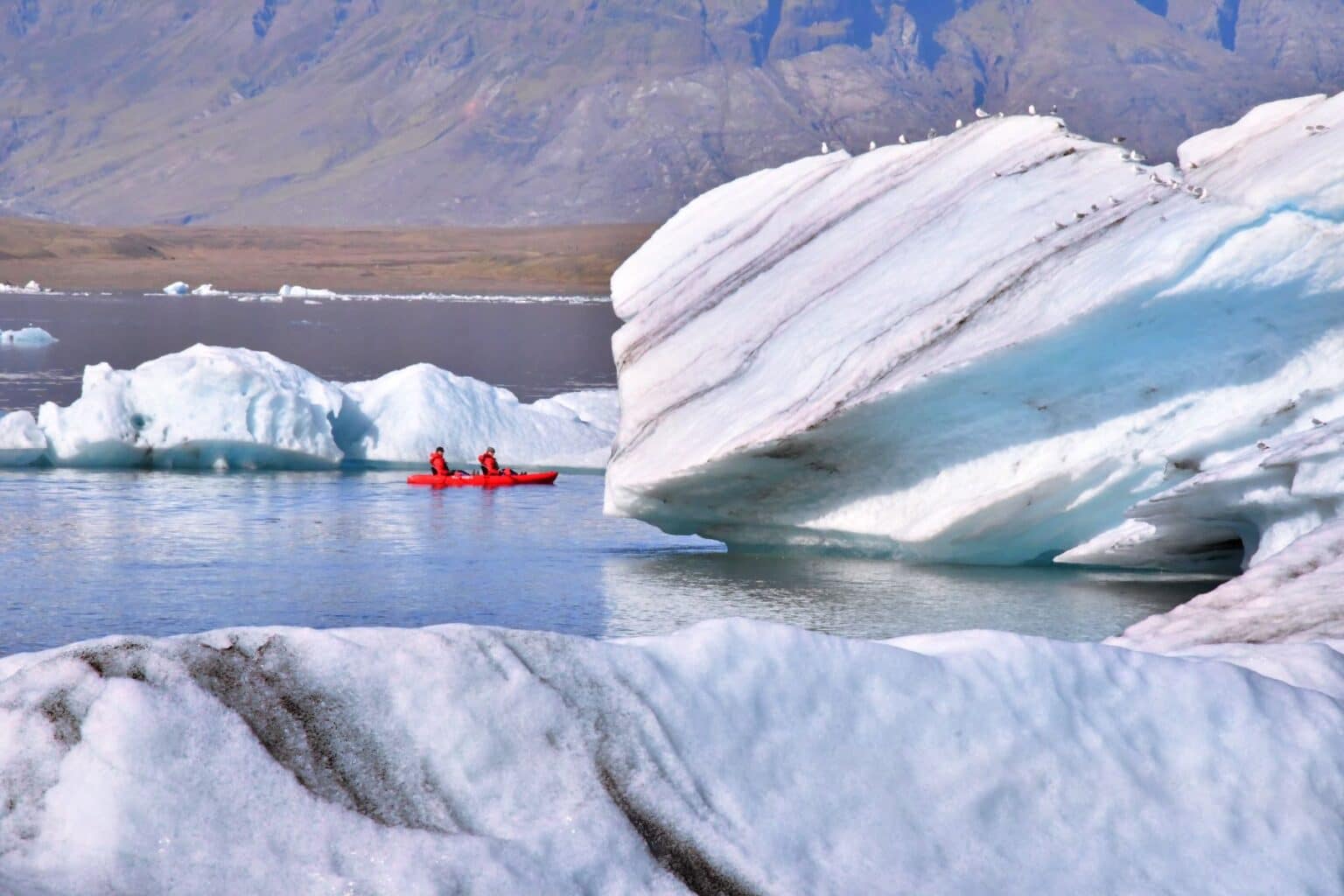
Conclusion
Winter kayaking offers an unparalleled experience with its unique challenges and rewards. Whether it’s the serenity of less-crowded waters or the thrill of winter paddling, this kayaking season is worth exploring. But remember your safety hinges on the right winter kayaking gear and preparation. From assessing weather conditions to outfitting yourself correctly, these are the critical elements that turn a cold paddle into a winter wonder.
Ready to plunge into the beauty of winter kayaking? Equip yourself with the tips and gear mentioned in this guide, and you’re all set for an unforgettable journey. For more in-depth information and guides, make sure to check out more kayaking content on my Blog.


